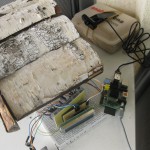Here here are some pictures of the fully assembled device. The strong IR light is quite impressive. It can be only seen by the digital camera (approx. 850 nm wavelength).
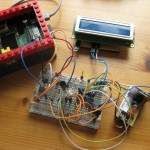 |
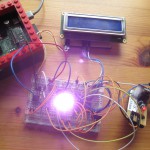 |
To trigger the webcam attached to the RasPi, few lines of Python code are sufficient. The script grabs a single frame from the cam, when GPIO14 input is set to HIGH.
import os
import time
import RPi.GPIO as GPIO
GPIO.setmode(GPIO.BCM)
GPIO.setup(17,GPIO.IN)
input = GPIO.input(17)
while True:
if GPIO.input(17) == GPIO.HIGH:
os.system("/usr/bin/fswebcam -c /home/pi/programming/fswebcam.conf")
time.sleep(5.5)
os.system("mv ./snap.jpg `date +{c7f7cb1468c0d02af358b3ce02b96b7aadc0ce32ccb53258bc8958c0e25c05c4}s`.jpg")
Now I’ve been ready for a test run at the bird feeder. Unfortunately I had only an old cam with 640×480 resolution – time for an upgrade to the RasPi HD cam ….
After a few minutes, some feathered clients showed up in front of the lens of my cam …
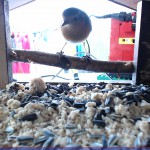 |
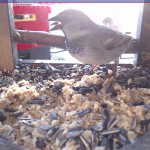 |
I improved the setup by enclosing the breadboard and RasPi into a box of LEGO bricks. The diodes fit nicely into a brick with holes.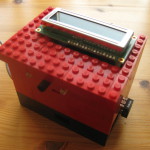
… so my next task is to move the circuit to a perma-proto board or PCB.
